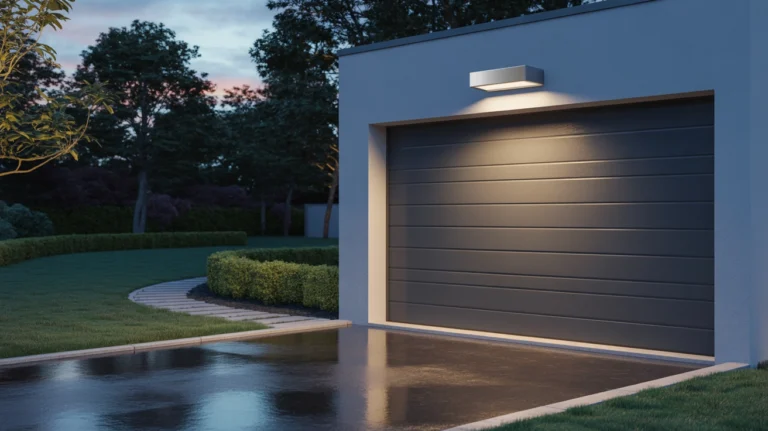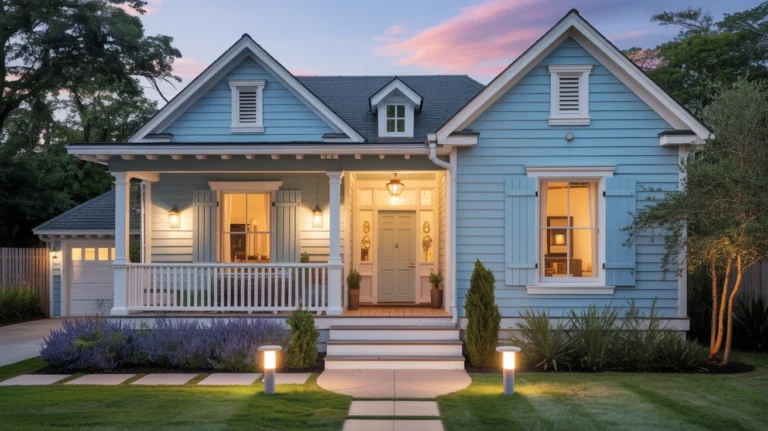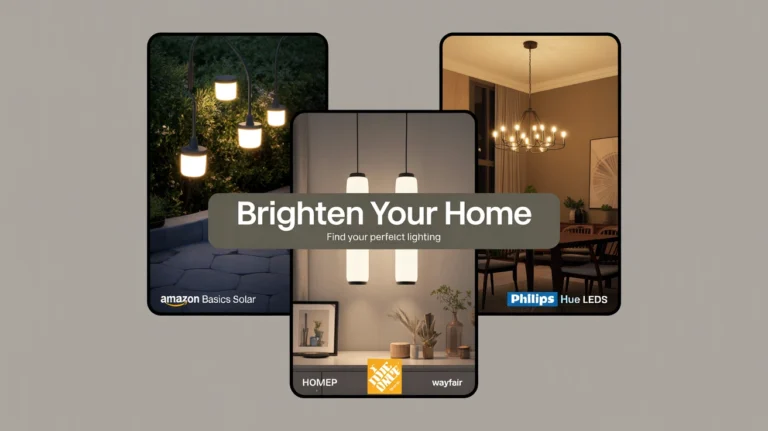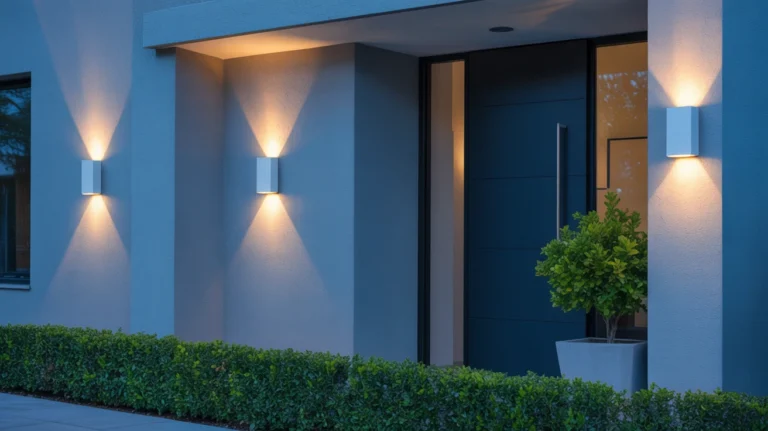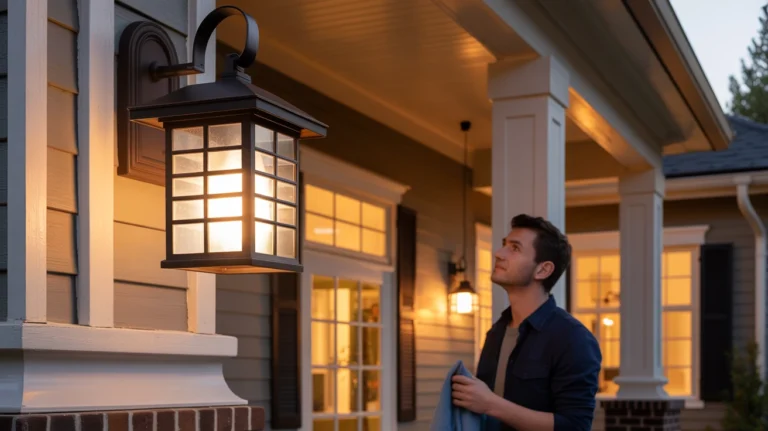How to Retrofit Your Home with LED Exterior Lights
Retrofitting your home with LED exterior lights upgrades energy efficiency, enhances curb appeal, and improves safety for front porches, patios, pathways, and driveways. In 2025, LEDs offer 60–80% energy savings over traditional incandescent or halogen bulbs, with long lifespans and versatile designs. This guide provides step-by-step instructions to retrofit your home with LED lighting, including solar and smart options, featuring products from Philips Hue, Amazon Basics, and Leonlite to transform your dream home sustainably.

Why Retrofit with LED Exterior Lights?
- Energy Savings: A 10W LED saves ~$16.42/year vs. a 60W incandescent (6 hours/day, $0.15/kWh).
- Longevity: LEDs last 25,000–50,000 hours (~10–20 years) vs. ~1,000 hours for incandescents.
- Curb Appeal: Enhances light blue, gray, or white exteriors with warm (2700K) or cool (4000K) light.
- Sustainability: Reduces carbon footprint; solar LEDs eliminate grid use.
- Smart Features: Motion sensors and app control optimize efficiency and security.
Steps to Retrofit Your Home with LED Exterior Lights
1. Assess Your Current Lighting Setup
Evaluate existing fixtures to determine retrofit needs and compatibility with LEDs.
- Checklist:
- Fixture Types: Identify sconces, floodlights, pathway lights, or string lights.
- Bulb Types: Check for incandescent, halogen, CFL, or outdated LEDs (e.g., E26, GU10, BR30 bases).
- Wiring: Note hardwired, plug-in, or battery-powered fixtures; inspect junction boxes for corrosion.
- Condition: Look for rust, cracked lenses, or loose seals, indicating replacement needs.
- Light Output: Estimate lumens (e.g., 60W incandescent ~800 lumens) to match LED equivalents.
- Tools Needed: Screwdriver, voltage tester, flashlight, ladder.
- Tip: Take photos and label fixtures for reference when shopping.
- Example: Replace 60W incandescent porch sconces with Amazon Basics LED Bulbs (~$10, 10W, 800 lumens).

2. Choose LED Bulbs or Fixtures
Select LED bulbs for existing fixtures or new LED fixtures for outdated or damaged setups.
- Bulb Replacement:
- Compatibility: Match base (e.g., E26, GU10) and size (e.g., A19, PAR38).
- Lumens: 100–400 for pathways, 400–800 for porches, 800–2000 for security.
- Color Temperature: 2700K–3000K (warm) for ambiance, 4000K–5000K (cool) for visibility.
- Dimmable: Ensure compatibility with existing dimmers or smart apps.
- Example: Philips Hue A19 LED Bulb (~$25, Amazon, 10W, 800 lumens, smart-enabled) for sconces.
- New Fixtures:
- Types: Wall sconces, floodlights, pathway lights, or solar spotlights.
- Features: IP65/IP66 weatherproof, motion sensors, smart controls.
- Materials: Brass, aluminum, or stainless steel for coastal durability.
- Example: Leonlite LED Motion Sensor Floodlight (~$60, Amazon, 20W, 1800 lumens) for driveways.
- Solar Option: Linkind StarRay Solar Spotlight (~$30, Amazon, 7W, 400 lumens) for wire-free retrofits.
- Tip: Choose Energy Star-certified LEDs for rebates ($2–$20/fixture).

3. Plan Your Lighting Design
Optimize placement and functionality to maximize efficiency and aesthetics.
- Considerations:
- Purpose: Security (floodlights), ambiance (string lights), navigation (pathway lights).
- Coverage: Space pathway lights 2–3 feet apart, floodlights for 30–50 ft areas.
- Aesthetics: Match finishes (matte black, brass) to light blue, gray, or navy exteriors.
- Layering: Combine ambient (sconces), task (floodlights), and accent (spotlights).
- Smart Features:
- Motion Sensors: Reduce runtime (~$1.65/year saved per 10W fixture).
- Dusk-to-Dawn: Auto on/off to prevent daytime use.
- App Control: Schedule or dim via Philips Hue or Govee Home apps.
- Example: Install Philips Hue Econic Wall Lantern ($180, Amazon) with Hue Motion Sensor ($50) for porch automation.
- Tip: Test placement with a flashlight at night to preview effects on siding or landscapes.

4. Gather Tools and Materials
Prepare for a safe and efficient retrofit with the right equipment.
- Tools:
- Screwdriver set, wire cutters/strippers, voltage tester.
- Ladder, gloves, safety glasses.
- Drill (for new fixtures), caulk gun (for sealing).
- Materials:
- LED bulbs or fixtures, wire nuts, electrical tape.
- Weatherproof caulk, mounting hardware (screws, anchors).
- Optional: Zigbee hub (e.g., Hue Bridge, ~$60) for smart lights.
- Safety Gear: Non-slip shoes, insulated tools.
- Tip: Buy extra bulbs or hardware to account for errors or future replacements.
5. Safely Remove Old Bulbs or Fixtures
Follow safety protocols to avoid electrical hazards when removing existing lights.
- Steps:
- Turn Off Power: Switch off the circuit breaker; confirm with a voltage tester.
- Remove Bulbs: Unscrew incandescent, halogen, or CFL bulbs; dispose of CFLs at recycling centers due to mercury.
- Remove Fixtures (if replacing):
- Unscrew mounting plate from junction box.
- Disconnect wires (black to black, white to white, ground to green/copper).
- Label wires for reinstallation.
- Inspect: Check junction box for corrosion or damage; clean or replace if needed (~$10–$20).
- Safety Tip: If wiring is frayed or outdated, hire an electrician ($50–$100/hour).
- Disposal: Recycle old bulbs/fixtures at Home Depot or local facilities.
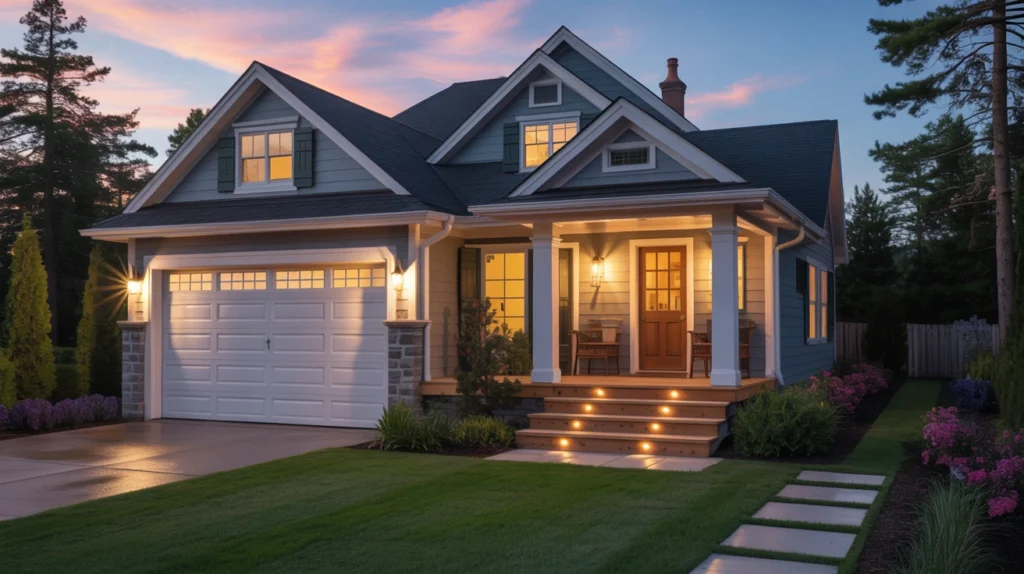
6. Install LED Bulbs or New Fixtures
Retrofit by installing LED bulbs in existing fixtures or mounting new LED fixtures.
- Bulb Installation:
- Insert compatible LED bulb (e.g., Amazon Basics A19, ~$10, 10W) into socket.
- Test by restoring power; adjust dimmer settings if applicable.
- Ensure IP65 fixture seals are intact to protect bulbs.
- Fixture Installation:
- Mount Base: Secure new fixture’s mounting plate to junction box with screws.
- Connect Wires: Attach black (hot) to black, white (neutral) to white, ground to green/copper using wire nuts; wrap with electrical tape.
- Attach Fixture: Screw fixture to mounting plate; insert LED bulb or use integrated LED.
- Seal: Apply weatherproof caulk around edges to prevent water ingress.
- Test: Restore power and verify operation.
- Solar Installation:
- Stake solar lights (e.g., Amazon Basics Solar Pathway, ~$40/8-pack) in south-facing areas with 6–8 hours sunlight.
- Charge 24–48 hours before use.
- Smart Setup:
- Pair with Philips Hue Bridge or Wi-Fi app (e.g., Govee Home); configure motion sensors or schedules.
- Example: Retrofit porch sconces with Kichler Barrington LED Lantern (~$150, Home Depot, 10W).
- Tip: Adjust motion sensor range (10–33 ft) to avoid false triggers from pets or traffic.

7. Test and Adjust Lighting
Ensure proper function and aesthetic alignment after installation.
- Tests:
- Functionality: Confirm lights turn on/off, dim, or respond to motion sensors.
- Coverage: Check illumination reaches intended areas (e.g., pathways, facades).
- Smart Features: Verify app control, Alexa, or Google Home integration.
- Aesthetics: Assess light color (2700K vs. 4000K) against paint swatches at night.
- Adjustments:
- Reposition solar panels for better sunlight exposure.
- Angle spotlights or floodlights to minimize glare or light pollution.
- Fine-tune motion sensor sensitivity or duration (30 seconds–5 minutes).
- Tip: Use dark sky-compliant fixtures to reduce upward light waste.

8. Maintain Your LED Lighting
Regular maintenance ensures long-term efficiency and performance.
- Tasks:
- Clean: Wipe lenses and solar panels monthly to remove dust or salt.
- Inspect: Check wiring or seals yearly for corrosion, especially in coastal areas.
- Replace: Swap solar batteries every 2–5 years (~$2–$10); LEDs last 10–20 years.
- Update: Keep smart light apps/firmware updated for new features.
- Warranties: Use Philips Hue (2 years), Amazon Basics (1 year), Leonlite (3 years).
- Tip: Store spare bulbs or batteries for quick replacements.
Additional Considerations
- Rebates: Check Energy Star or DSIRE for $2–$20/fixture rebates to offset costs.
- Smart Integration: Pair with Ring Home, Hue, or Govee apps for motion-triggered or geofenced lighting.
- Aesthetic Match: Choose matte black for modern, brass for coastal, or nickel for traditional homes.
- Safety Codes: Verify HOA or local regulations for outdoor lighting; ensure UL-listed fixtures.
- Cost Estimate:
- Bulb Retrofit: ~$10–$25/bulb x 10 fixtures = $100–$250.
- Fixture Retrofit: ~$40–$180/fixture x 10 = $400–$1,800.
- Electrician: $100–$300/fixture for hardwired installs.
- Savings: ~$164/year for 10 LED fixtures vs. incandescents (10W vs. 60W, 6 hours/day, $0.15/kWh).
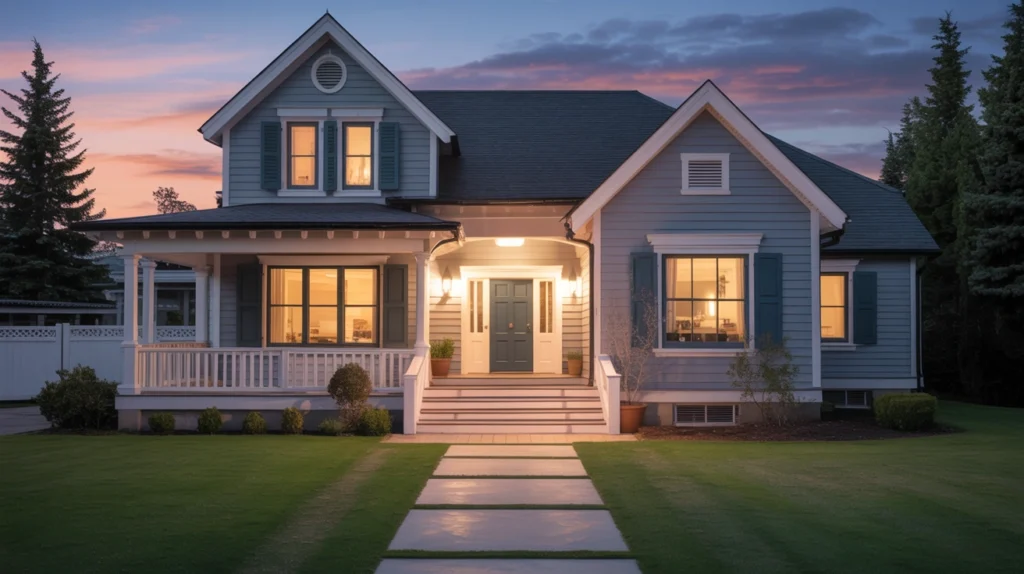
Where to Buy
- Amazon: Budget-friendly Amazon Basics, Philips Hue, Linkind, Leonlite.
- Home Depot: Stocks Kichler, Hinkley, Hampton Bay.
- Wayfair: Stylish modern or coastal fixtures.
- Manufacturer Sites: Direct purchases for warranties.
Customer Insights
- Sarah M., Raleigh, NC: “Retrofitting with LED sconces saved our bill and lit our light blue porch!”
- Emily T., Seattle, WA: “Solar LEDs were easy to install on our gray path—no wiring!”
- Mark T., Central Iowa: “Motion-sensor LEDs upgraded our navy driveway’s security!”
- Lisa M., Wilmington, NC: “Hue smart lights made our sage green facade pop!”
Conclusion
Retrofitting your home with LED exterior lights boosts energy efficiency, safety, and curb appeal while reducing costs (~$100–$200/year for 10 fixtures). Assess your setup, choose LED bulbs, solar, or smart fixtures like Philips Hue, Amazon Basics, or Leonlite, and follow safe installation steps. Shop at Amazon, Home Depot, or Wayfair, and leverage rebates for savings. Maintain your lights for longevity, and share your LED retrofit projects on Pinterest or Houzz to inspire others while illuminating your dream home sustainably!

